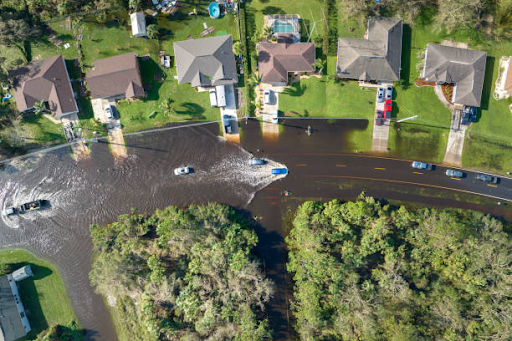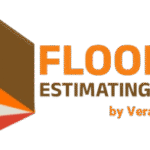Many homeowners and renters usually perceive a flood as a rare event—something that occurs far away, to other people. However, floods remain among the most frequent and destructive natural disasters, causing not only emotional distress but also significant financial burdens. In such cases, flood insurance is more than merely an option; it is a requirement. For those new to the process, understanding Florida flood insurance quotes can seem daunting. With seemingly complicated terms, coverage options, and varying costs, many individuals are unsure what to expect when exploring policies. This guide is designed to demystify the process, providing insight into how flood insurance quotes work, the main factors influencing them, and tips on finding the right coverage with confidence.
Why Flood Insurance Matters
Flooding is a situation when one can get caught off-guard and standard property insurance mostly does not cover the damages caused by floods. This means that property owners will have to cover repair, replacement, and recovery costs out of their pockets. A flood insurance policy is there to help cover this gap, providing a financial safety net when water damage changes everyday life. Knowing before anything else the necessity of flood insurance is the first stage, but the next is understanding how much it will cost and what it would be like if you get a quote.
What Is a Flood Insurance Quote?
A flood insurance quote is basically a rough idea of what the cost of your insurance coverage will be, considering your property and risk profile. In the same way as any other insurance, the quote reflects several factors such as the location of the property, its elevation, flood zone designation, the structure of the building, and the amount of coverage requested. The quote is an instrument through which you can compare the alternatives, foresee the costs, and make a well-informed decision before you commit to a policy.
Usually, the procedure of providing a quote involves the submission of a detailed description of one’s home or property. Not only the geographic location but also the age of the building, the type of construction, and even the presence of certain protective measures like flood-proofing or elevated structures are included in this description. The more detailed the description, the more exact the estimate will be.
Factors That Influence a Flood Insurance Quote
If they are beginners, upon first receiving a flood insurance quote, they will probably ask why the prices vary so much. In fact, there are no two properties with identical risks, and insurers take this into consideration while they give out the quotes. Among the most significant sources of influence is the location. Properties located in flood zones deemed high risk typically have to pay much higher premiums than those situated in areas of low risk. Elevation is also very important; houses that are built below the base flood elevation are often eligible for lower rates because they are less likely to be damaged.
Aside from location and elevation, the appearance and architecture of the building also play a role. For example, the rate will be higher for houses with basements, while those with features that make them water-resistant such as elevated utilities or water barriers will be issued with lower premiums. Moreover, the amount of coverage chosen by you i.e. if it is only for the building or for the content as well will have an effect on the total amount of the quote. In other words, the higher the limit of the coverage, the more you will pay.
Understanding Coverage Options
On a flood insurance quote, a beginner will frequently recognize the existence of two categories of coverage, namely building coverage and content coverage. Building coverage is the part that refers to the physical structure of a house, which includes the walls, flooring, and electrical systems as well as appliances. Meanwhile, contents coverage is meant to safeguard the owner’s personal belongings, which may consist of furniture, clothes, and electronics.
Deciding upon the right coverage for you is very important. There are people who would mainly be concerned with the structure of the home for which they would most probably choose building coverage only, and there are people who would also like their valuables inside the house to be protected. The equilibrium between these two forms of coverage directly determines the final quote. Knowing exactly what you want helps to keep away from both underinsurance and spending on what is not necessary.
How Flood Zones Impact Quotes
A determining factor of quotes is flood zones. They are areas defined by the level of flood risk that are usually determined by government mapping systems. The quote for a house in a high-risk flood zone, for instance, will be much higher than the one for a house located in a moderate or low-risk area.
To a newcomer, it might be more understandable if flood zones are seen as something that is not set in stone. The maps are continually going through the process of being revised and an area that was reclassified as a low-risk zone may have been a high-risk one before. So, knowing what your property’s flood zone designation is is really important because it can influence a part of the coverage you would need and the price you would pay for insurance.
The Role of Elevation Certificates
Usually, an elevation certificate is considered a part of the quoting process. This paper gives all the necessary figures of a property such as its height in relation to the estimated base flood level of the area. The farther above this level a property is, the less it is likely to be damaged by the flood and the quote will probably be lower as well.
Not every property will need an elevation certificate but it could be a key instrument in getting a more accurate and a possibly lower quote for the ones in high-risk zones. For the beginners, knowing the importance of the certificate will definitely make the process less confusing and will bring them a clearer picture of how insurance providers evaluate risk.
The Quote Process Made Simple
If someone new to flood insurance, would be the case, then the process of getting a quote might seem intimidating, however, it is very simplified and transparent. The first step would be to collect information about the property such as its address, size, structure and current condition. The next stage would be the assessment carried out by the insurers to determine the classification of the property’s flood zone, its elevation and any features for flood mitigation. They would then pick up the requested level of coverage, calculate the costs, and produce a quote.
The time beginners should spend upon receipt of a quote is not money but the time to check it out. It is very important to ascertain the inclusions, exclusions, and the claims limitations among others. This step is important in determining whether the policy complies with financial and practical needs.
Why Quotes Can Vary
Many beginners are surprised to find that quotes from different insurers can vary widely, even for the same property. This is because insurers weigh risk factors differently and may offer different terms, coverage limits, or deductibles. Some may also factor in additional benefits, such as assistance with temporary housing, which influences the final cost.
This variation underscores the importance of comparing multiple quotes. By doing so, property owners gain a broader perspective and can identify which policies offer the best balance between coverage and affordability.
The Importance of Deductibles
Deductibles play a key role in shaping flood insurance quotes. A deductible is the amount you agree to pay out of pocket before the insurance coverage takes effect. Higher deductibles typically result in lower premiums, while lower deductibles increase the premium but reduce your financial responsibility during a claim.
Beginners should carefully weigh this trade-off. Choosing a deductible that fits both budget and risk tolerance ensures that the policy remains practical and manageable, even in the event of a flood.
Common Misconceptions About Flood Insurance Quotes
One common misconception is that flood insurance is only necessary for properties in high-risk areas. The reality is that flooding can occur almost anywhere, often in unexpected places. Another misunderstanding is that quotes are final and cannot be adjusted. In truth, factors such as improvements to property elevation or added protective features can potentially lower quotes over time.
Beginners may also assume that flood insurance is excessively expensive, but the cost depends heavily on individual circumstances. For some, premiums may be more affordable than expected, particularly in lower-risk areas or with the right mitigation measures in place.
Preparing for Your Quote
To make the process easier, beginners should be prepared with accurate information about their property. Having documents such as property records, flood zone maps, and even elevation certificates on hand can make the quoting process smoother. Being upfront and precise about the property’s condition also ensures a more accurate estimate.
Conclusion
Navigating flood insurance for the first time may seem overwhelming, but understanding quotes is the key to building confidence. A flood insurance quote is more than just a number—it reflects the unique risk profile of your property and the level of protection you choose. By learning how factors such as location, elevation, coverage type, and deductibles affect a quote, beginners can approach the process with clarity and control. Working with trusted flood insurance companies in Florida can further simplify the experience, providing guidance and options tailored to your needs.
Flood insurance is not just a financial product; it is peace of mind in the face of one of nature’s most unpredictable forces. Taking the time to understand your quote helps ensure that when the waters rise, your finances and your future remain protected. With the right knowledge, even beginners can simplify the process and make informed decisions that safeguard what matters most.


